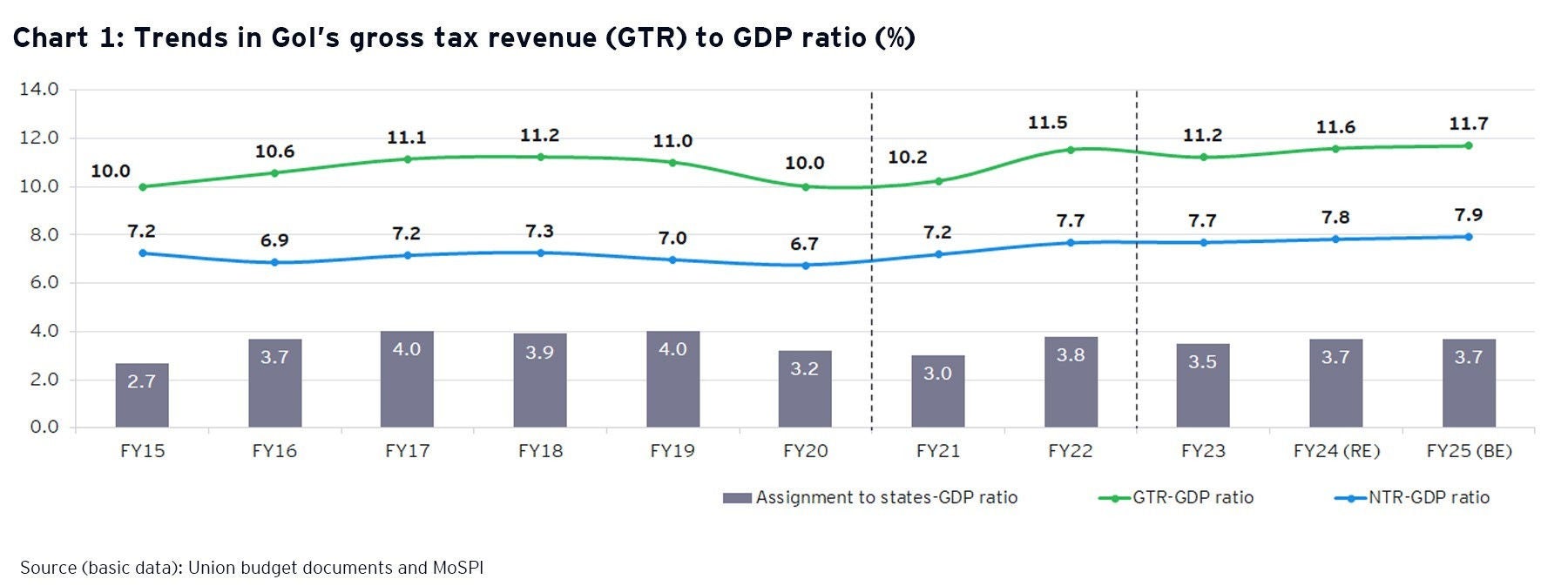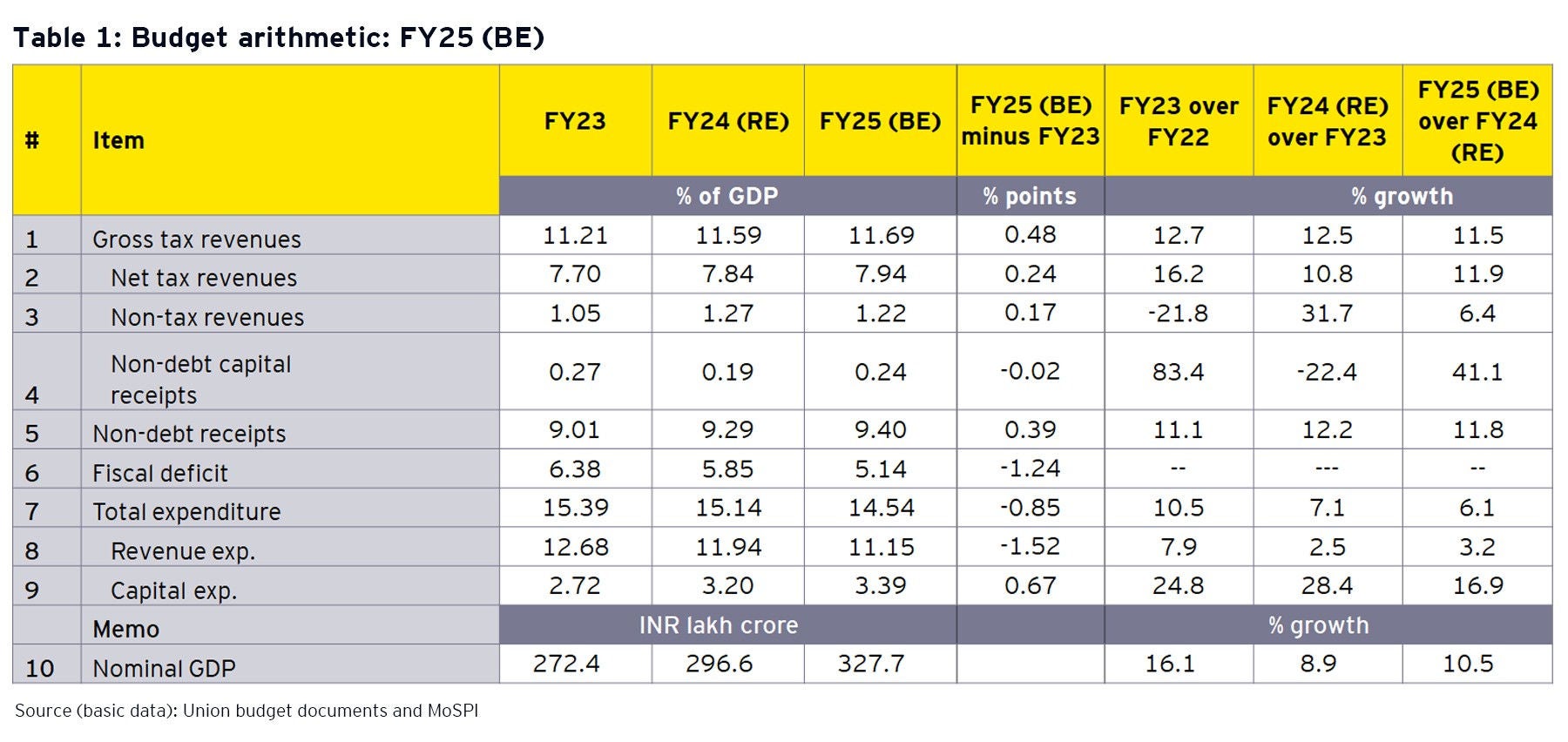EY refers to the global organization, and may refer to one or more, of the member firms of Ernst & Young Global Limited, each of which is a separate legal entity. Ernst & Young Global Limited, a UK company limited by guarantee, does not provide services to clients.
The net tax revenue (NTR) relative to GDP indicates the share of GoI’s GTR that accrues to the GoI. The excess of GTR over NTR mainly indicates tax revenues that are shared with the states . GoI’s NTR-GDP ratio increased notably after FY20. The share of states in GoI’s GTR relative to GDP fell from 4% in FY19 to 3% in FY21. This was due both to a fall in the GoI’s GTR to GDP ratio and an increase in the non-sharable central cesses and surcharges. If we look at the share of states in GoI’s GTR, it fell from 36.6% in FY19 to 29.4% in FY21. However, the share of states in GoI’s GTR relative to GDP is estimated to increase from 3.5% in FY23 to 3.7% in FY24 (RE) and FY25 (BE). This translates to an improvement in the share of states in GoI’s GTR from 29.4% in FY21 to 31.1% in FY23 and further to 31.9% in FY24 (RE) and 31.8% in FY25 (BE).
GoI’s expenditure structure
A second major outcome of fiscal reforms during the last 10 years relates to an improvement in the structure of government expenditures. Considering FY15 to FY25 (BE), the share of GoI’s revenue expenditure in total expenditure has fallen from 88.2% to 76.7%, a margin of 11.5% points. Correspondingly, there is an increase in the share of capital expenditure from 11.8% to 23.3% over this period. Within capital outlay, there is a further trend of increase favoring non-defense expenditure, which implies expenditure on infrastructure.
It is notable that the FY25 Interim Budget steered clear of any significant voter-oriented giveaways. As a percentage of primary expenditure, allocation for major social sector schemes is budgeted at 12% in FY25, close to the average for the last four years.






